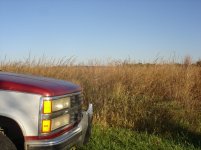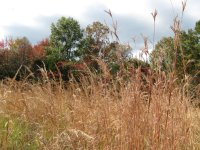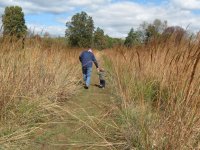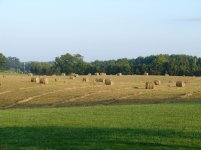Wow I love this thread and the post's.
I would not spend a bunch of money on seed. Your soil bank more than likely has the seed there unless you have been heavy on the 2-4D for many years.
Starting out I would disk the area. Just a soil disturbance will help get things going and remove brush and small trees this may help you control a burn easier. ANd open up your soil seed bank.
Fire is a tool. I would recommend to anyone wanting to apply a prescribed burn to an area be trained. In fire: behavior, effects, weather etc.
MS State University offers Certified Burn mang classes, 5 days that all.
Contact your local; county agent, USDA NRCS, DNR, to find out what is avable in you State.
A written burn plan for a specific area is a must have period. This is to protect you and the public.
Your plan at a minimum should have;
location of burn(detailed),
desired fire weather conditions, Like high temp of 65 to 80 degrees,
relative humidity 35% to 50%.
Desired wind direction,
Phone numbers.
What you put in your burn plan has to be followed to a T.
You can go to National Weather service and find your official fire weather forecast for your area. This fire weather forecast from the NWS will determine if you can get a permit to burn. When your fire weather forecast falls between your desired fire weather in your plan go burn it!! And stay with it, its your baby.
MS uses the transport wind as a determining factor to issue permits. If the TPWind is less than 3.5 meters a second don't even pick up the phone it won't happen, and going ahead without a permit is stupid.
Is some person with a breathing problem down the road gets smoked in from your burn and has to go the ER, you are SOL.haha. Or you smoke in a HWY or road and there is a wreck. Your smoke is your biggest liability!!!!!!
But if you go by your plan and have a permit it will be hard to find you were negelent.
I have been doing prescribed burns on public and private land for 15 years and I still get nervous when I strike the match.
BUT I know the awesome results from a good RX fire and thats why I burn.
There are many native grass plants the require fire, (and wildlife esp birds) wire grass (found in gulf coast states) will only bloom and produce seed if burned.
I could go on and on ladys and gents.
Bottom line is get educated on fire and how to manage it.
What your grass needs; fall burn, spring time burn, mowing, disking etc.
AND have fun with it!!!!!:thumbsup:
DAVID,







